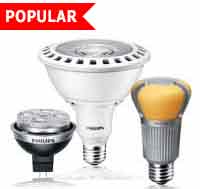ComEd encourages customers to recycle out-dated lightbulbs
After nearly 200 years, the standard incandescent light bulb is in for a change as the result of new federal guidelines requiring more energy-efficient lighting products.
In light of this transition and as spring cleaning season progresses, ComEd encouraged customers to properly dispose of old-fashioned light bulbs at local recycling sites and illuminate their homes with energy-efficient light bulbs, such ascompact fluorescent lamps (CFLs).
These lights consume about 75 percent less energy and last about 10 times longer than traditional incandescent bulbs, lower electricity costs and decrease the amount of greenhouse gas emissions in the environment.
In 2007, Congress passed the Energy Independence and Security Act (EISA), which sets new efficiency standards for consumer products, including appliances and lighting. The law requires manufacturers to produce new light bulbs that consume about 25 percent less electricity, making way for more innovative and efficient lighting choices, such as halogen bulbs, CFLs or light emitting diodes (LEDs).
A phase-out process for the old-fashioned incandescent bulb was launched in January, starting with 100-watt bulbs.
In 2013, 75-watt bulbs will no longer be produced and in 2014, 60- and 40-watt bulbs will join the phase-out.
ComEd customers can learn more about energy-efficient lighting options, such as CFLs and LED bulbs, by visiting the “home savings” section of the ComEd.com home page, which also includes information on how to obtain discounts for select ENERGY STAR-qualified lighting products. ComEd lighting experts also offer customers tips during visits to home improvement stores across northern Illinois.
“With all the recent federal changes in lighting standards, it’s more important than ever for customers to stay informed on lighting to make the right choice,” ComEd Energy Doctor Timothy Melloch said in a press release. “There are so many new lighting options for our customers to choose from and understanding those options is extremely important.”
Consumers should also know that the Federal Trade Commission (FTC) now requires new fact labels on light bulb packaging to educate them about lighting products and help them choose the best energy-efficient light bulb for their needs.
The labels include energy costs per year, indicate the bulb’s life expectancy, and provide information on wattage and “lumens,” the unit measurement of a light bulb’s brightness.
Source: MySuburbanLife












Comments